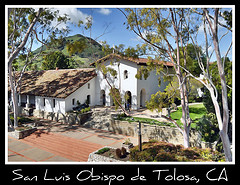
- Image by Michael D Martin via Flickr
A fiber-optic project could be the first step in connecting SLO County to ultra high-speed broadband
BY MATT FOUNTAIN
When Google announced in February 2010 that it was launching a competitive experiment to bring ultra high-speed broadband networks to a small number of trial locations throughout the United States via fiber-optic lines, its intention wasn’t to break into the service-provider business.
The Internet-search giant was attempting to promote awareness of high-speed fiber, test new ways to build fiber networks, and explore the creative potential ultra-high-speed Internet service carries for developers and consumers—the potential, for example, to create new bandwidth-intensive “killer apps” and services and other uses not yet imagined.
This is according to Google Spokesman Dan Martin, who said that beyond the capability to Skype with pristine quality or back up massive files in mere seconds, fiber-optic networks offer significant benefits for the entire community. But don’t take his word for it; the studies are in.
What does the Google Fiber competition have to do with the Central Coast? Rumor has it we didn’t win—Google has promised to announce the lucky community sometime later this year—so why twist the dagger? A local telecommunications firm is awaiting word as to whether it has the green light for a joint public-private project, meaning the federal government may have selected SLO County to be the proud recipient of a hefty grant to craft a fiber-optic infrastructure.
And unbeknownst to most local residents, the area already has one leg up on the competition: The region is the country’s westernmost hub for trans-Pacific fiber lines connecting directly to locations in Asia and Australia.
A national priority
Fiber-optic technology is nothing new in the tech world. After all, beams of light have been shooting through strands of fiber for more than 20 years. What has improved are the electronics that transmit and receive the information at either end.
Underground fiber lines have a lot of advantages over the less effective, soon-to-be obsolete copper wire in use for decades for the same purpose. The most obvious of these advantages is speed. For perspective, the speed of a T-1 connection found in a typical office runs at an average of 1.5 megabits per second (mbps). Fiber connections can run anywhere from 1,000 to 10,000 mbps. They’re not electrical connections, and unlike copper, aren’t susceptible to shortages and outages from moisture. Short of a physical break in the line, fiber can last much longer than copper.
Article Continued on New Times SLO…
Related articles by Zemanta
- Chattanooga utility EPB Fiber Optics offering fast Internet service for $350 a month (taragana.com)
- Fiber-optic cable cut in Thurston County, Telecom says (theolympian.com)
- Telecast Fiber Systems Launches CopperHead™ 3050 Camera-Mounted Fiber Optic Transceiver (prweb.com)





